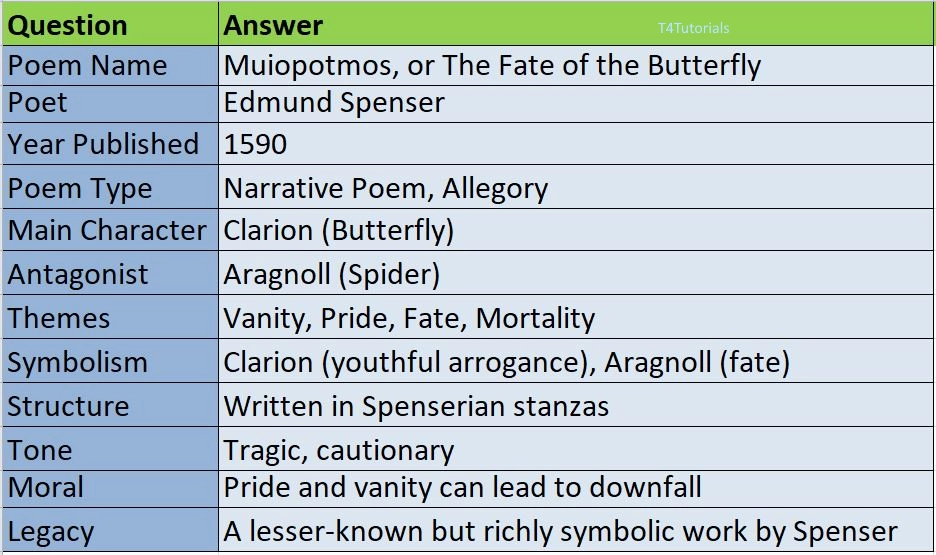Summary:
Muiopotmos, or The Fate of the Butterfly is a narrative poem by Edmund Spenser, written in 1590. The poem tells the tragic story of a beautiful butterfly named Clarion, who is born into a luxurious and privileged life. Despite his beauty and grace, Clarion becomes prideful and careless, indulging in vanity and pleasure rather than caution. One day, while enjoying his surroundings, he is caught in a spider’s web, woven by the cunning and predatory spider Aragnoll. The poem describes in vivid detail how Clarion, despite his beauty and speed, is ultimately trapped and killed by the spider. The poem is often interpreted as an allegory for the dangers of pride, vanity, and the unpredictable nature of fate. It also reflects Renaissance humanist ideas, warning against overindulgence in worldly pleasures.
10
Score: 0
Attempted: 0/10
Subscribe
| Question | Answer |
| Poem Name | Muiopotmos, or The Fate of the Butterfly |
| Poet | Edmund Spenser |
| Year Published | 1590 |
| Poem Type | Narrative Poem, Allegory |
| Main Character | Clarion (Butterfly) |
| Antagonist | Aragnoll (Spider) |
| Themes | Vanity, Pride, Fate, Mortality |
| Symbolism | Clarion (youthful arrogance), Aragnoll (fate) |
| Structure | Written in Spenserian stanzas |
| Tone | Tragic, cautionary |
| Moral | Pride and vanity can lead to downfall |
| Legacy | A lesser-known but richly symbolic work by Spenser |